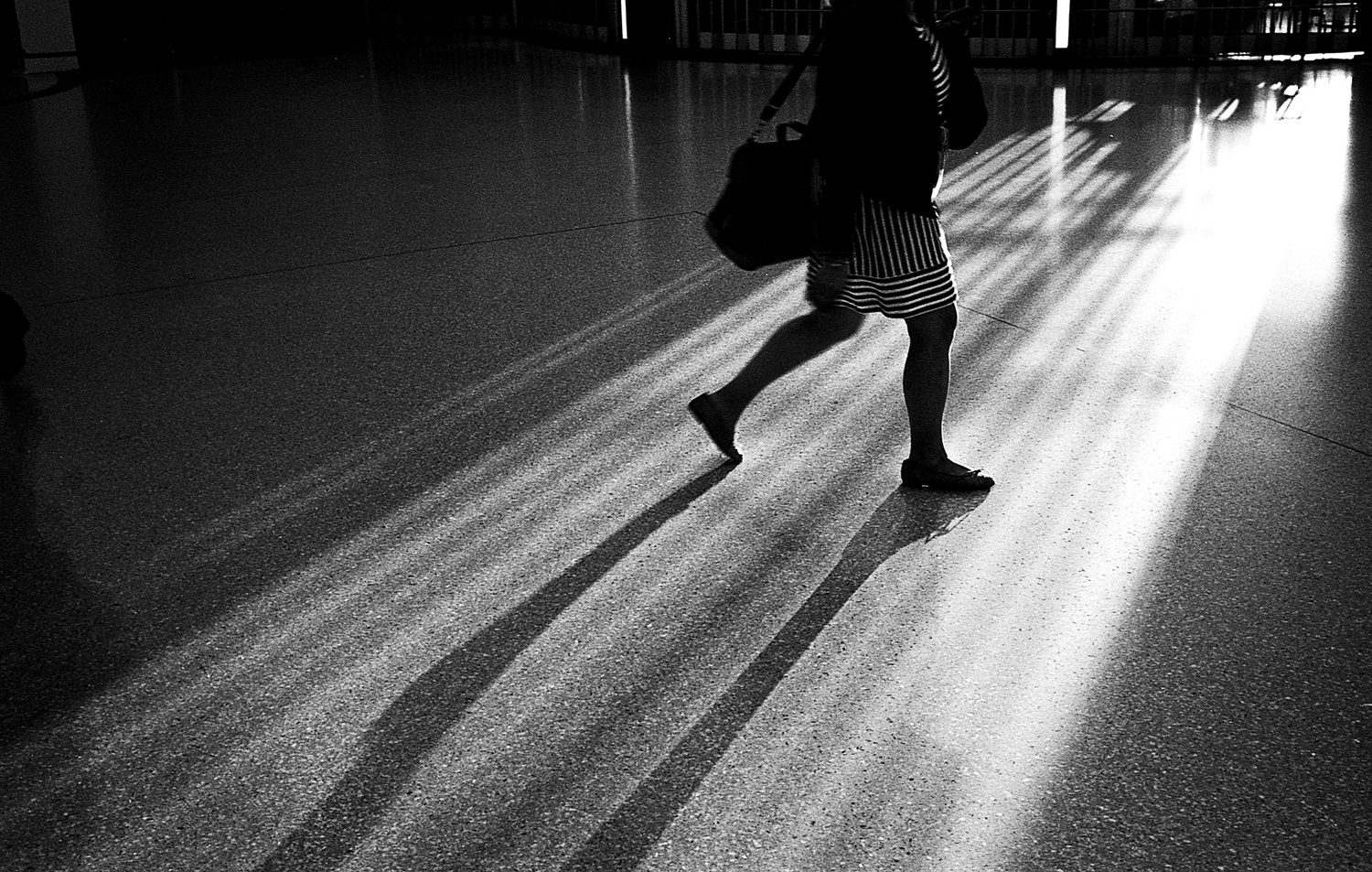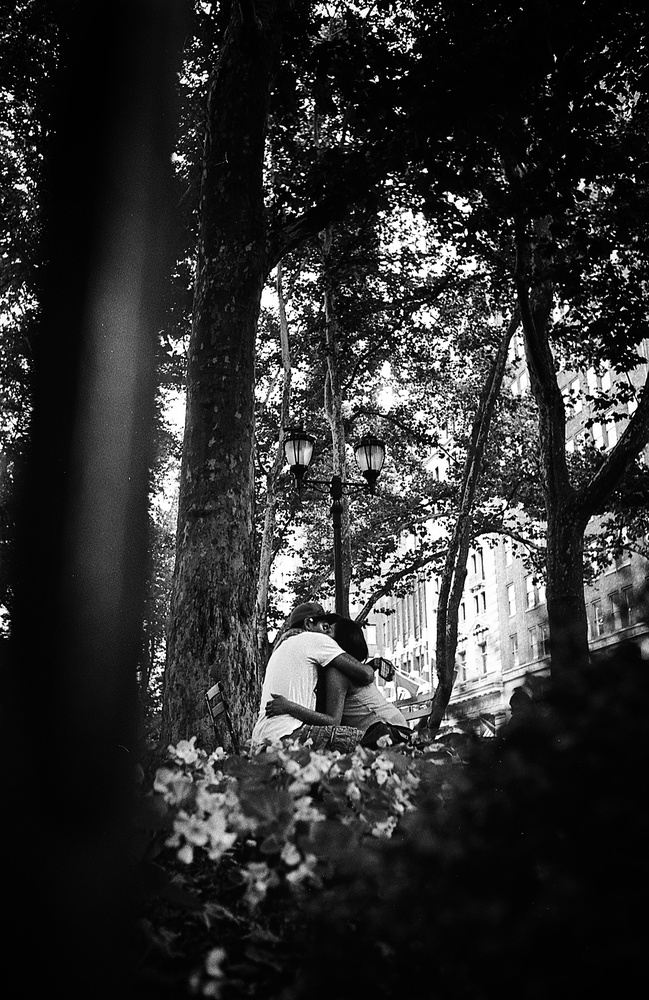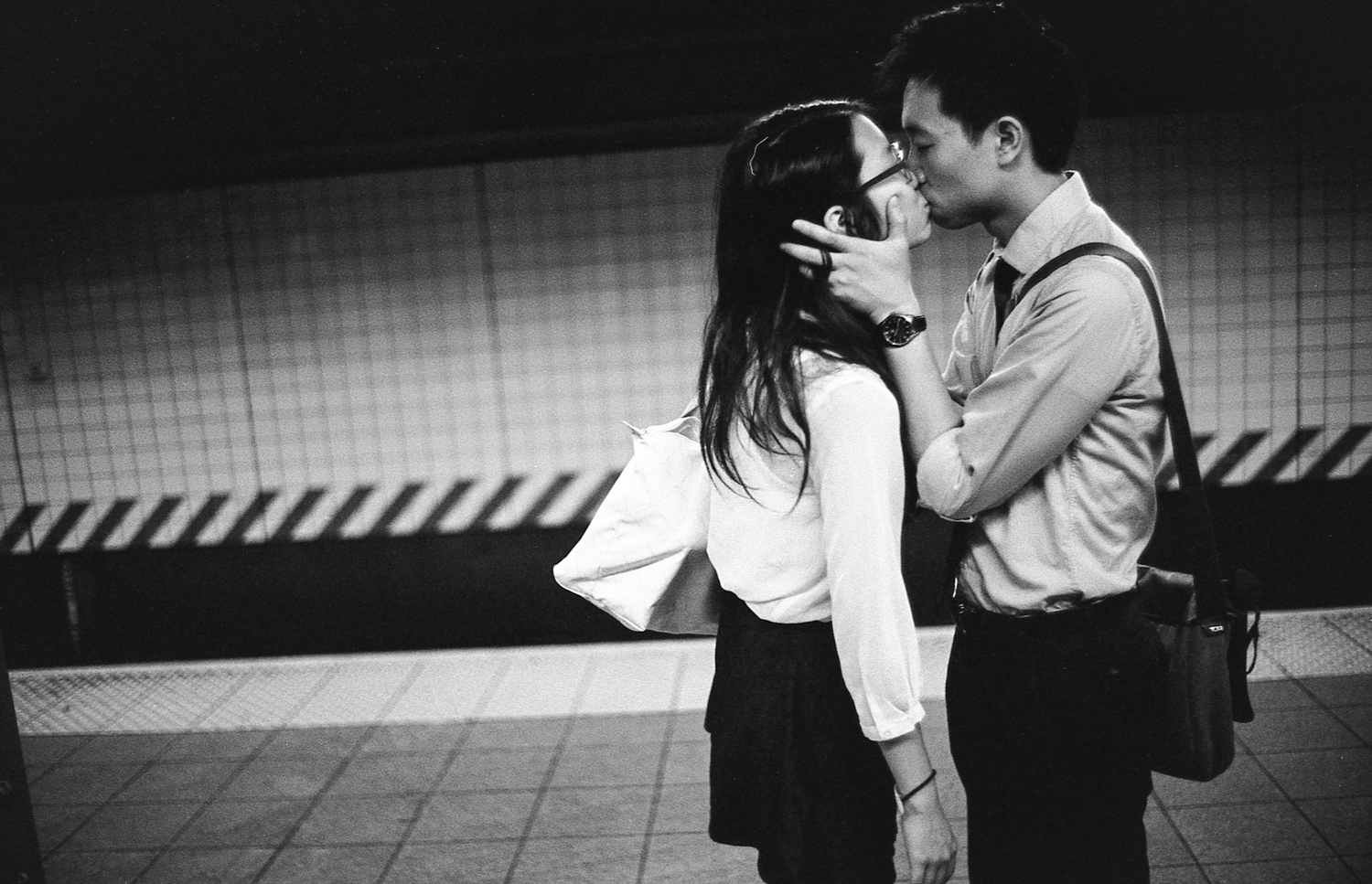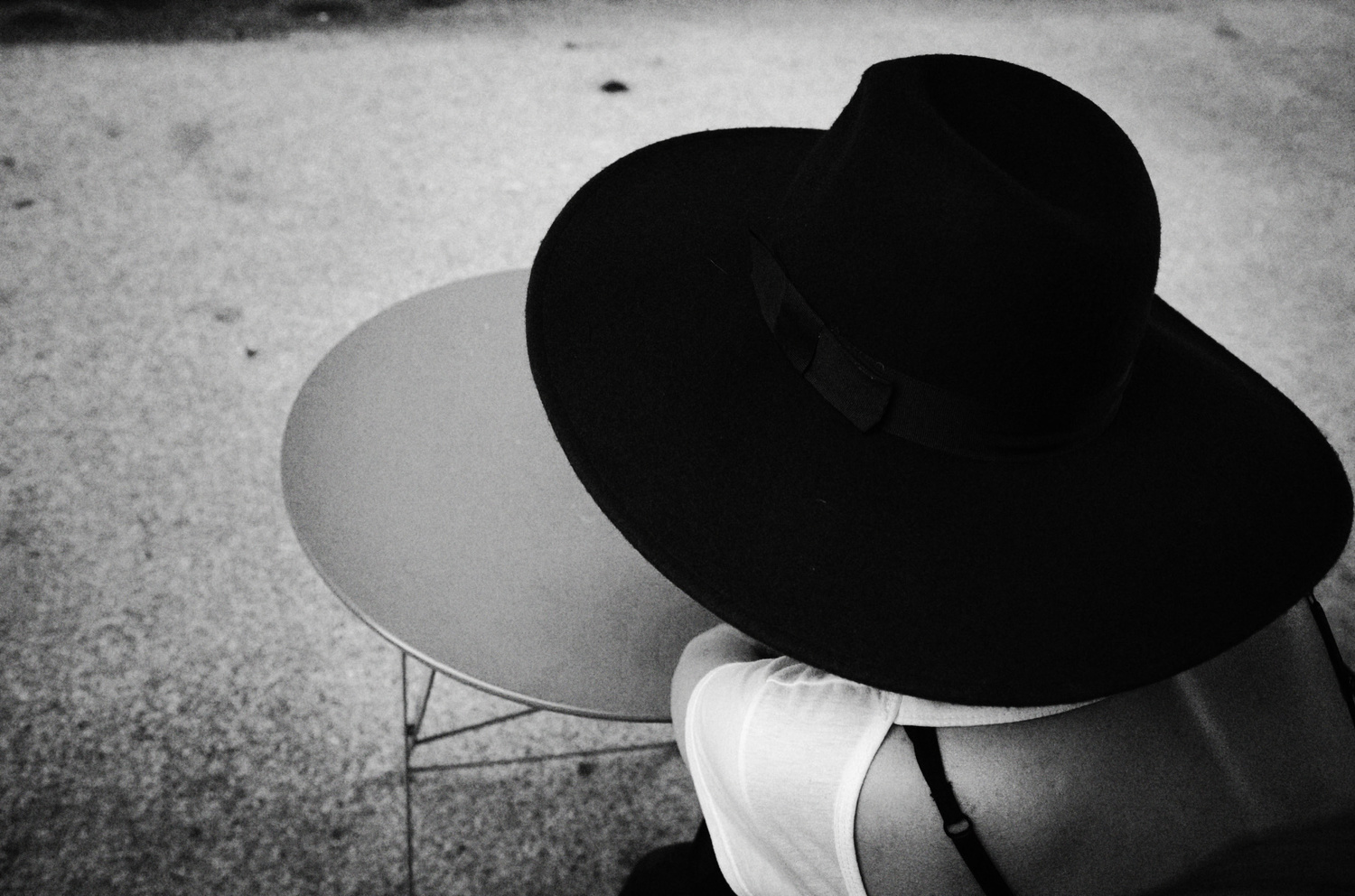I’ve just read a comment from a photographer who said it’s time to stop shooting in black and white. He claimed we don’t see the world in black and white and it was something only done in the past due to the limitations at the time and it’s time to move on. Here’s a number of reasons why I think it’s critical to shoot black and white from time to time, and how it can help nurture your photographic eye.
Ansel Adams, Cartier Bresson, David Bailey, Karsh, Sebastio Salgado, Albert Watson, Peter Lindbergh, Herb Ritts, Irving Penn, Daidō Moriyama, Sally Mann, Avedon – the list of master photographers, alive or dead, who saw black and white not simply as a technical limitation but as a creative choice, could be an entire article in itself. But why did they choose it?

The comment I saw which sparked today's article. What do you think? Do you agree it's time to only shoot color or does black and white still have a place today?
We Shoot Differently When Choosing Black And White
Most photographers ask when should a photograph be converted to black and white. Rarely is the discussion around why a photograph should be black and white from the outset, and that’s fascinating.
While the “when” and “why” are related, shooting in color and then wondering whether to convert the image employs a very different mindset from setting out and seeing the world in black and white, and then working within those confines. Parameters of a world without color forces you to see things differently, to stretch and work out your photographic eye muscles, and that in turn pushes you creatively (at least in my experience it has).
Shooting with black and white film predominantly for the last 6 months has been one of the single most important aspects of my photographic development this last year. It has helped push not only my digital stills work, but I’ve seen the video work I do be shaped by shooting black and white stills. If you look at my Instagram feed or work going onto my Facebook page, you’ll see most of it is in black and white nowadays, with commercial work or video work creeping in from time to time.
I almost guarantee that if you spend some time shooting in black and white, you’ll start to notice some changes in what and how you shoot too. These have been the key reasons I’ve seen the change in my own work:
1. Color No Longer Distracts
Clothing, color temperature differences in ambient light sources, cars and colorful background distractions have stopped being an issue. I still focus on my backgrounds, but I care more about the relationship between my subject and background, rather than a distracting color. It’s freed up that part of my brain. Black and white allows you to begin to think about these key elements (lighting, composition, elements in and out of the frame) that you might otherwise not focus on as much when you’re thinking about making colors work together, or pop.

The color temperatures here all over the place here from multiple sources. I focused more on using some negative space to separate her silhouette and play with leading lines from the wall mounted slats.

The color of everyone's clothing here was super distracting. Black and white allowed me to just focus on the interplay with people and light on a busy commute in Manhattan and pick out this guy in his shades walking determinedly to work.
2. You’ll See Light Differently
What you lose from not being able to capture beautiful golden hour light, you’ll gain back in focusing more on the direction, quantity and quality of light around you. Learning how to read and play with different elements of light in this way is a fantastic skill that parlays directly into shooting video or studio strobes too, trust me.

Light and dark and the interplay between the two contrasting elements can be more interesting to focus on than color relationships

Light and the relationship with your subject (and the shadows that form) as well as other complementary elements (like the lined pattern of this woman's skirt) become the focus, rather than the color of elements in the frame

I liked how the subject's head was outlined by the stark light of his room here, as he looked out onto the street.
3. It Helps Emphasize Emotion
Looking at someone’s face, or into their eyes, without the distraction of color can provide a stronger emotional connection to your subject. It’s not necessarily always the case, but if like me, you often feel more connected to a person in a black and white image over a color image, this could be the reason why. With color gone, it’s purely about the connection you have with the subject.

The color of the trees and shrubs, buildings and lamp posts are all irrelevant as the focus becomes the emotional bond between the embracing couple

If this was in color, you'd have at least 4 colors in the background and middle ground elements alone, excluding the colors of their clothing and bags. Instead I just focused straight on the split second connection between them as they share a kiss

The love and security this child gets from her mother is palpable. She briefly looked up and I took the shot, her eyes and the tonality of the skin tones here is really interesting to me for some reason
4. The Timeless / Classic Quality From Black And White
One of the most common reasons people want to shoot in black and white today is because it lends a certain timeless quality to the images. This is because we still think of black and white as being a throwback to the photographic past. Of course, it is in terms of black and white was much more prevalent before color, but this is still a great reason to shoot black and white.

This could be a look out of the 1950s. The color of the dress was more of a contemporary peach but without the color of the clothing or accessories, it's more difficult to suggest the era

Here the bride has more of timeless look. In color, the tattoo and mix of natural and yellow chandelier light would have been jarring.

In New York, you'll often see people dressed like they are from another era. Again, black and white provides a mystery for the era he could be from, especially as it has muted the colorful inside of the bus

Again this dapper fellow looks like he could easily have been out of the 1950s. Color in the subway, and the person in the background would have certainly not created as much ambiguity in the image
5. It Amplifies How You Use Negative Space
Negative space – the areas of the frame that have nothing in them, are easier to showcase and highlight when shooting black and white. This relates back to minimizing distractions from not shooting in color. You tend to focus on light and dark areas of the frame – and their inter-relationship. Playing with negative space is also useful in separating your subject nicely from the background and give added depth to the image.

Playing with negative space - and the elements in the frame - is much easier to visualize when you see things in black, white and greys

With a similar concept of reflection and negative space, a puddle can become a playground into seeing different spatial arrangements.

Fog atop Twin Peaks in San Francisco provides a great amount of negative space to juxtapose the two view seekers. Their clothing and other elements are muted as distractions because of the lack of color
6. It Highlights Shape, Form and Pattern In The Image
I tend to focus a lot more than I used to on the elements in the frame, both in terms of their shape and form, but also how they relate to one another. You feel like there is a world to explore when you see connecting elements in the foreground and background). Again, color would be distracting here – black and white simplifies the ability to see these elements and play with them.

Without the distraction of color, we see the interplay in lines and patterns between two museum visitors clothing and a background painting at the Met

A woman's dark blue hat (here in dark black) becomes a key element in the interplay between her and the table at which she sits.
7. To Highlight Beauty and Skin Tones
It doesn’t matter what race, color or background you happen to be – black and white photography provides wonderful tonal range between the deepest blacks and the whitest whites. Garishly colorful makeup is no longer distracting. Pigments, discoloration and distracting elements of the skin can become less obvious. It’s not hard to see why fashion photographers like Peter Lindbergh have built their entire careers shooting almost exclusively in black and white.

Simple natural window light bathe this young lady in soft light while a black board behind separates her from her environment and focuses our attention

Similarly, this darker skinned model has glowing skin really just from the natural window light and strobe camera right to provide some specular highlight to her skin
8. It Helps Focus On Composition
This reason (and focusing on lighting), are the two strongest reasons for me to shoot in black and white. Of course, composition is not color-dependent. A strong composition is a strong composition. The reason this is important is because – like the others points in this list – black and white compositional elements do away with the distraction of color. Suddenly elements within the frame can relate in a way that might otherwise have been throw off because of jarring color.

Without the background color to distract, here I simply focused on waiting patiently for someone to pass by the guy leaning on the railing to see if i could time a shot to get two elements in the fore and mid ground to match up at the right moment

The two men on Coney Island boardwalk balance one another without their colorful attire being distracting. The contrast between the dark lines in the wooden planks and railing also draw the eye through the image

Using negative fill and not having to worry about colorful clothing, this inverted reflection shot in the rain focuses our attention on the ghostly images walking in a strange, reflected upside down world
So What About Color?
The argument of not shooting black and white because it’s a thing of the past is a little odd to me, especially given that color photography is not necessarily a modern invention. Kodachrome for 35mm cameras has been around since the 1930s. The far more interesting (and possibly meaningful question) may be:“Why is black and white still so prevalent today, given we've been able to shoot color for so long?”.
I still shoot color and love playing with it, but I certainly enjoy the challenge and creative push from shooting in black and white.

Color has it's place. Here, I shot an image with a Fujifilm 400 Superia. I just don't think the reflection of the flag in the rainy table top would have worked if I'd shot this with the black and white Tri-X film i usually shoot
There are very good reasons black and white stills exists today. I challenge anyone not shooting much in black and white to at least shoot RAW and change the setting on your camera LCD to display those JPEGs in ‘monochrome’. See whether or not it yields any change in how – or why – you shoot what you do. The results might surprise you. And if you are shooting black and white, tag me and let me know so I can check out your work, and feel free to post up a link to something you've shot that worked in black and white in the comments below to share with the community.







Black and White focuses on light, line, shape, texture, form, and pattern among other things. These things are typically minimized in color photography precisely because color many times distracts. This isn't a technology issue, and it never has been. In fact some of us see color as a technical retrograde because we do see the world in color, we're used to it, and color can often be a detractor from what the artist is trying to convey. Color has it's place, as does B&W. It's up to the photographer to make use of whatever image qualities he or she needs to in order to convey their message. To say one should never use B&W and move on is like saying you should never hand write a letter since you have a word processor. It makes no sense, and is an unnecessary self-imposed limitation.
One of the best posts I've read on FS in a long time. Great photos as well. I've recently starting shooting film, which really puts an emphasis on the decision to shoot color or B&W. The first roll of film I put in my new Leica M2 was BW, then everything I saw that day which caught my eye was about colors. Drove me crazy at first, but I'm learning to try and get the best out of whichever film I'm currently using. Anyway, I think you're right in that they both have a place, just like film and digital do.
I colorized the picture of Thomas alva edison in his early 30's using Pixbim colorsurprise AI tool
https://pixbim.com/colorsurprise-ai-pixbim